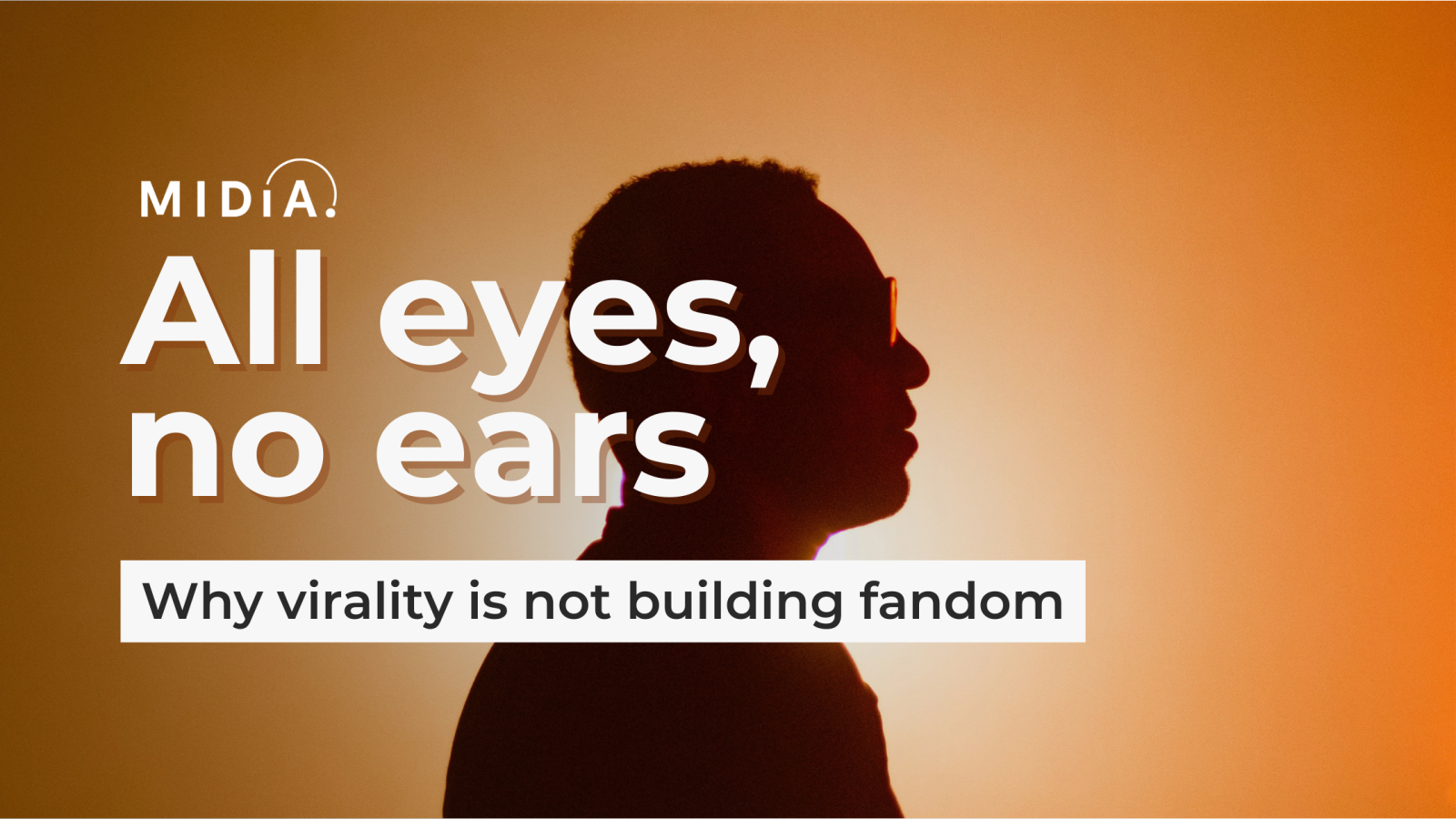Gen Z social habits spell trouble for music discovery


Social media is king among Gen Z and may seem to act as a hotbed for viral hits. However, social media’s impact on music streams and fandom is not as strong as it appears. MIDiA’s new report All eyes, no ears | Why virality is not building fandom highlights where social media is lacking when it comes to music discovery – particularly among younger consumers.
TikTok is an especially popular discovery source among Gen Z, with 51% of 16-24-year-olds naming it among the main places they discover new music, compared to 37% of overall consumers. However, simply being exposed to music on social media matters little if consumers do not stream the music they hear or, better yet, discover the artists behind it. MIDiA’s report reveals warning signs that the discovery cycle is broken among young users – and time is running out to fix it.
Song discovery less likely to translate to artist discovery for 16-24-year-olds
While younger listeners are overall more likely than the average consumer to have high engagement with music, it is the generational warning signs that are concerning. After hearing a new song they like on social media, consumers aged 16-24 are less likely than 25-34-year-olds to take all but one of the core actions within the music discovery funnel, including looking to see who a song is by, saving it on streaming, and becoming a fan. Song-to-artist discovery is a particularly weak link. Of 16-24s who discovered new artists they loved in the past year, only 19% went on to listen to more music from that artist – 5% less than 25-34s (24%).
Of course, social media platforms aim to keep users on-app, so there is little incentive to push them towards streaming platforms after discovery. Still, some social apps have added features in an effort to bridge the gap to streaming – like TikTok’s “add to music app” button. However, these features seem to be losing impact among younger consumers – despite them using TikTok the most. While 75% of 16-24-year-olds use TikTok weekly, only 31% have ever used the “add to music app” feature, compared to 36% of 25-34-year-olds.
Again, this reflects a broader generational shift: 16-24-year-olds are less likely than the age cohort above them, 25-34-year-olds, to have used any one of TikTok’s music features, including not just “add to music” but also artist teaser posts, the TikTok shop for artist merch, in-app artist experiences, and more.
Featured Report
Ad-supported music market shares Spotify ascending
Ad-supported streaming has always occupied a unique and slightly contentious place in the music industry ecosystem. On the one hand, ad-supported still represents an effective way to reach consumers at scale, creating a wider subscriber acquisition funnel.
Find out more…All hope is not lost…yet
Fortunately, 16-24-year-olds still want to discover new music – even more than the average consumer. Over half (55%) say that they have become more interested in finding new music compared to 46% of overall consumers, and half say they expect their interest to grow. Still, for those 20% of 16-24s who have lost interest, social media is a major reason. While 16-24-year-olds are the least likely age group to say they have lost interest because they think the music being released is not exciting, they are the most likely age group to blame it on either the fact that the music they hear on social media is enough for them, or that the current options for discovering music are not working well for them. For Gen Z, the issue lies not with the music, but the method of discovery.
While social media is not going away, artists and labels can focus on shifting where in the discovery cycle listeners tune in. On social media, a user’s first interaction with a song is through a short clip, making the leap to discovering the full song and the artist less necessary – the social clip is all they need. However, if a listener’s first point of contact is with the artist and the narratives behind the music they make, then that is what they will keep coming back to.
A discovery cycle centred around artist discovery also provides numerous opportunities for the listener to engage with the artist. By introducing the listener to both the artist’s catalogue and their artistic identity at the point of discovery, they can then engage in deeper fandom across streaming, social, and even IRL. Fixing the discovery cycle is key – cultivating fandom from the beginning rather than chasing widespread virality leads to more listeners not just hearing the song but truly discovering the artist.
The full MIDiA report, All eyes, no ears | Why virality is not building fandom, is now available to the public here.
Join us for a free webinar discussing key insights from this report – register here.

There is a comment on this post, add your opinion.